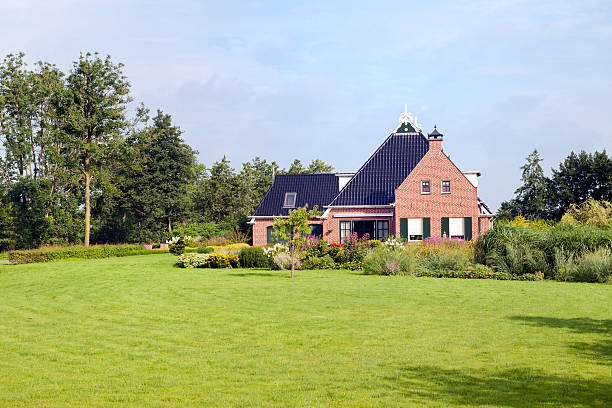Dutch houses are synonymous with charm and character, and they hold a special place in the world of architecture and real estate. In this article, we will delve into the unique aspects of Dutch houses and seek to answer some common questions about them.
What Are Dutch Houses Called?
Dutch houses are referred to by various names depending on their specific style and region. One of the most common names is “Dutch Colonial” or simply “Dutch homes.” These names encompass a range of architectural styles associated with the Netherlands and Dutch settlers in other parts of the world.
What Is a Typical Dutch House?
Dutch houses are known for their distinctive characteristics. A typical Dutch house often features:
- Steep Gabled Roofs: Dutch houses are renowned for their steeply pitched gabled roofs. These roofs not only provide a unique aesthetic but are also practical, as they can easily shed snow and rain.
- Brick Facades: Many Dutch houses are constructed using brick, which imparts a timeless and sturdy look. The bricks are often laid in a decorative pattern.
- Large Windows: Dutch houses tend to have large, evenly spaced windows. These windows serve to maximize natural light and offer picturesque views of the surroundings.
- Dutch Doors: Dutch doors, which can be divided into two halves that open independently, are a charming and practical feature commonly found in Dutch homes.
- Symmetrical Design: Many Dutch houses exhibit symmetrical designs, both in terms of the windows and the overall layout of the building.
What Is the Type of Dutch House?
Dutch houses encompass various architectural styles, including:
- Dutch Colonial Revival: This style is often associated with the early colonial period in America. It features a gambrel roof, brick or shingle siding, and a centrally located front door.
- Amsterdam School: A Dutch architectural movement from the early 20th century known for its expressive, distinctive style, with brick and sculptural elements.
- Dutch Renaissance: A style that flourished in the 17th century and is characterized by stepped gables, ornate detailing, and an emphasis on symmetry.
- Dutch Modernism: A more contemporary style that emphasizes clean lines, minimalism, and the use of modern materials.
What Are Dutch Houses Like?
Dutch houses are known for their cozy, inviting interiors. Inside a Dutch house, you might find:
- Exposed wooden beams on the ceiling, giving a warm, rustic feel.
- Tiled fireplaces, often adorned with Delftware tiles, which are quintessentially Dutch.
- Wooden floors and paneling, adding to the classic and timeless ambiance.
- Practical yet stylish built-in storage solutions.
Why Are Dutch Houses So Expensive?
Dutch houses can be expensive for several reasons:
- High Demand: Dutch houses are in high demand due to their unique charm and historical significance. This demand can drive up prices.
- Limited Supply: In some areas, the supply of Dutch houses is limited, which further increases their value.
- Historical Preservation: Many Dutch houses are protected by historical preservation laws, which can limit renovation possibilities but maintain the historical integrity of the buildings, making them more valuable.
- Desirable Locations: Dutch houses are often found in picturesque, sought-after locations, which can contribute to their high prices.
What Is Unique About Dutch Houses?
What makes Dutch houses truly unique is their timeless design, exceptional craftsmanship, and the rich history they represent. They seamlessly blend practicality with aesthetics, offering a cozy and welcoming atmosphere. The Dutch love for light and space is evident in the large windows and open layouts of these homes.
But what truly sets Dutch houses apart is their ability to tell a story. Each Dutch house has its history, often intertwined with the history of the Netherlands itself. Whether it’s a 17th-century canal house in Amsterdam or a Dutch Colonial Revival home in New England, these houses connect the past with the present, preserving a rich architectural heritage.
In Conclusion
Dutch houses, with their unique architectural features and historical significance, continue to capture the hearts and imaginations of people worldwide. They are more than just buildings; they are living stories, reflecting the culture and tradition of the Dutch people. If you’re lucky enough to own or visit one of these remarkable houses, you’re experiencing a piece of living history.
For more information on Dutch houses and their unique charm, visit home motivated.
